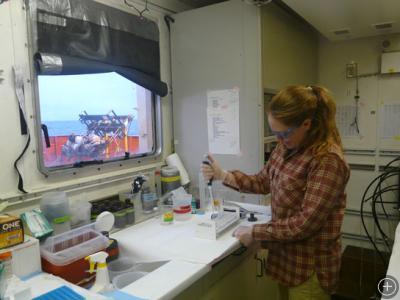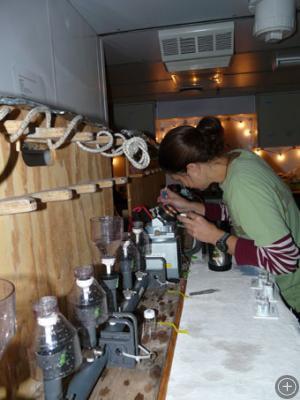Primary Productivity at an Iceberg Site
April 6th, 2009
ABOARD THE RVIB N. B. PALMER, ON THE SOUTHERN OCEAN– Not only do we want to know about what type of phytoplankton grow close to icebergs but we also want to know how well they grow. Primary production, or the rate of inorganic carbon taken up by cells is one of the methods used on this cruise to determine productivity. Diane Chakos takes the water collected by the Niskin bottles in CTD rosette (see previous dispatch) and incubates them for 24 hours under sunlight to estimate daily organic carbon production.
Based on underwater light levels we sample water from surface and at depth corresponding to 50%, 25%, 10%, 5% and 1% of surface light. Within the layer defined by 100% and 1% surface light most of the primary production occurs. Biomass, light intensity and abundance of nutrients, including inorganic carbon, all contribute to production. During austral fall in Antarctic waters we are experiencing only 12-h day light, plenty of nutrients and phytoplankton biomass equivalent to 0.5 milligrams per cubic meter results in about 5-10 milligrams carbon produced per cubic meter per day.

 No comments
No comments 








